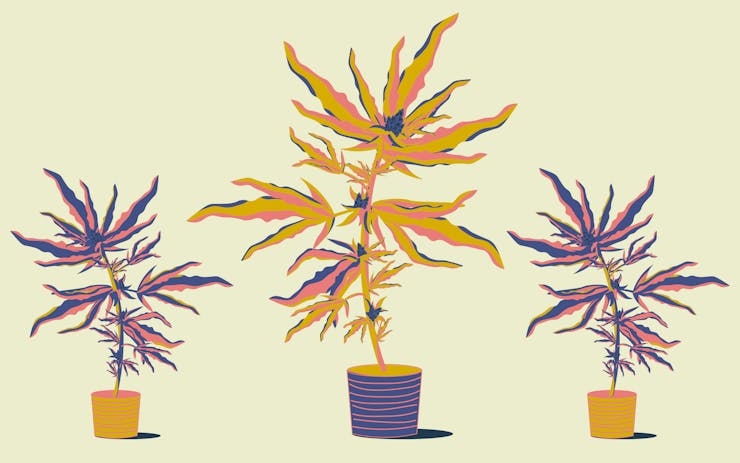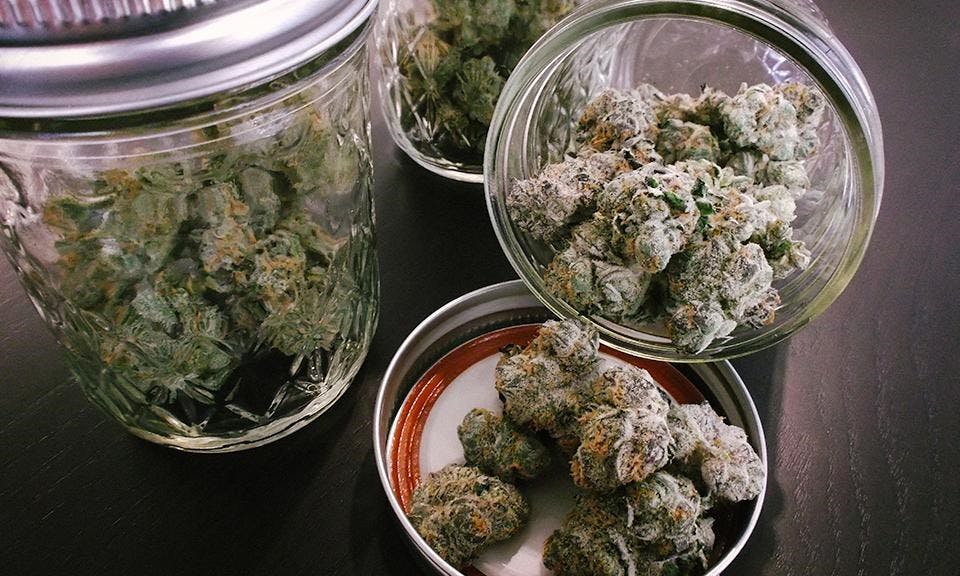Growing cannabis is all about producing large, aromatic colas, but at the end of harvest, we’re left with much more than just that—stalks, leaves, soil, and roots. Largely these materials end up in the dump or in your city’s composting program, but what if you could utilize these materials to cut down costs and improve your next harvest?
Plants grow in a continual cycle of nutrient exchange, and cannabis plants in your garden are no different. Every nutrient pulled from the earth besides water and CO2 are simply moved from the soil to the plant. One way to reduce your cost of growing and waste is to look into ways you can use the nutrient-dense portions of the plant that normally get tossed out.
So, how can you utilize old stalks, leaves, roots, and soil?

(Elysse Feigenblatt/Leafly)
Stalks: Mulch for your garden
Cannabis plants produce extremely fibrous material in their stalks. Commercial hemp farming is largely based around either the fibrous qualities of the plant and the oil extracted from the hemp seeds. An all-female cannabis garden won’t produce any seeds, but you’ll still be left with large quantities of stalks.
You can use a wood chipper to break down the stalks to create mulch. From here, you can either add this mulch to your compost pile or return it to your garden. Mulch should only be applied in gardens with living soils to ensure that it will break down over time to become both food and a new habitat for beneficial insects. Also note that you never want to use any plants that had diseases or infestations—they will likely spread their illness around the garden through the mulch.
Leaves: Juice, tea, and hash
Cannabis leaves, much like the stalks, are great for composting—but they can also be used for other projects.
There are two main types of cannabis leaves: fan leaves and sugar leaves. Fan leaves are the iconic, large leaves that serve as the primary source for capturing energy from the sun. Sugar leaves are the small, resin-coated leaves that form around the buds.
Because fan leaves do not contain high levels of cannabinoids, they don’t serve a purpose when it comes to making hash. However, it’s becoming popular to juice fan leaves as one does with other common leafy greens. You can also dry fan leaves and brew them into tea and or use them in recipes for salves.
Sugar leaves, on the other hand, produce a thick coat of cannabinoid-packed trichomes. To harvest them on a small scale, we recommend creating bubble hash or canna-butter. These solventless products can be made safely at home with simple setups.
Roots: Tea or topicals
Cannabis roots aren’t as commonly repurposed as leaves and stalks, but there is evidence of cannabis roots being used as medicine dating all the way back to 2700 BC. Brewed cannabis roots were historically used to treat pain, gonorrhea, and hemorrhaging during pregnancies.
The best way to prepare roots for medicinal use is by boiling them for tea or to dry the roots and grind them into a powder. Using either preparation, you can then create salves by mixing the powder or liquid with oils or other solutions.
Soils: Amended for future use
Used soil is the largest burden you’re left with after harvest. However, it doesn’t need to go anywhere. One of the best ways to save money on your next grow is to amend the soil you previously used so that it can host healthy, strong plants again.
To be certain of what your soil is missing, you can purchase test kits which will give you detailed information about which nutrients are available or unavailable in your soil.At this point, you can purchase pre-mixed amendments or customize your mix with desired nutrients. Regardless of which method you choose, amending your soil will keep your plants happy while saving you money in the long-run.






